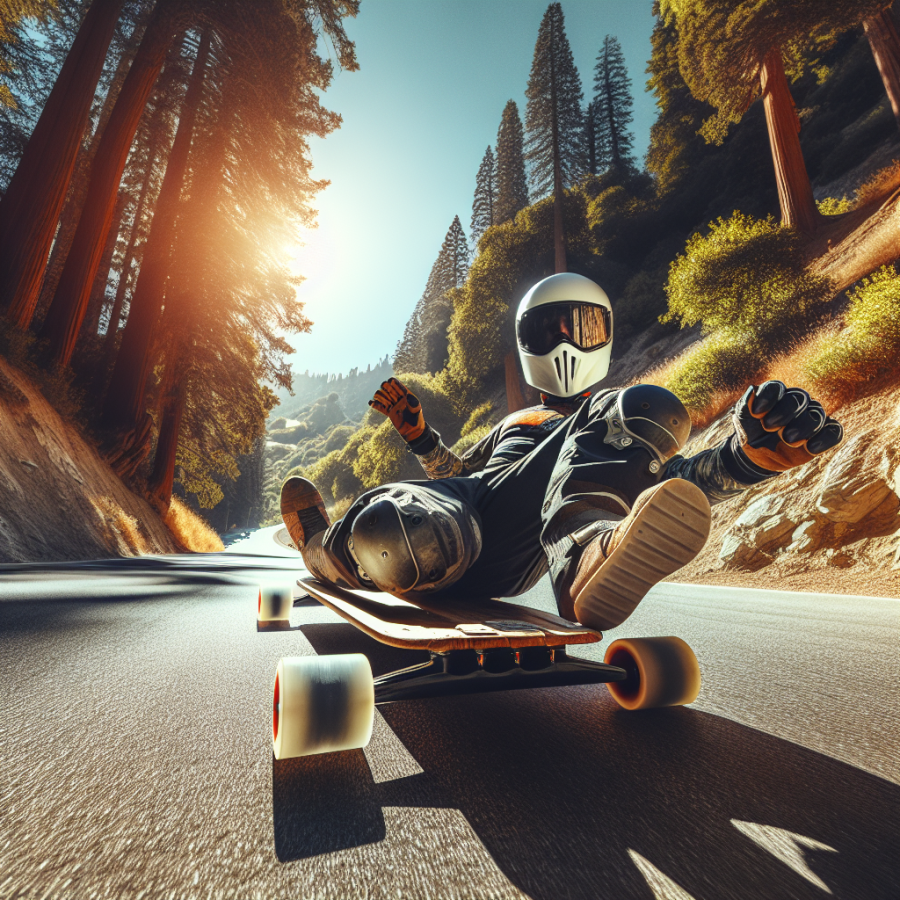Embracing the Rush: An Introduction to Streetluge Dynamics
Streetluge, a heart-pounding extreme sport that sends riders hurtling down inclines at exhilarating speeds, is a dance with gravity and aerodynamics. To thrive in this activity, understanding the basics of streetluge dynamics is essential. At the core of these dynamics is the relationship between the rider, the board, and the earth's gravitational pull.
The anatomy of a streetluge board is starkly different from those of its board sport cousins. Designed for optimal speed and stability, these elongated boards are crafted with a low center of gravity in mind. By hugging the ground, they reduce the wind resistance that might otherwise slow riders down or cause instability. Materials also play a crucial role; with most boards made of aluminum, steel, or composite materials, their weight distribution is finely tuned for smooth descension and resilience against the high-speed friction of the ride.
Rider position is a critical factor in the aerodynamic efficiency of streetluge. Unlike stand-up boarding disciplines, streetluge participants lie on their backs with their feet directed forward, minimizing their profile to cut through the air effectively. This position is not only for speed; it also allows better control over the board when negotiating turns and helps in braking, as riders often use their feet to slow down or stop.
The gravitational pull is the invisible motor of streetluge. It relentlessly pulls the board and rider towards the center of the earth, accelerating them down the slope. Streetluge athletes must understand how to channel this force: when to allow gravity to maximize their speed, and when to resist it slightly to navigate turns without losing control or veering off course.
The wheels of a streetluge board are another fundamental element of its dynamics. Built tough to endure the stress of high speeds and the heat from the friction of the road, they are larger and softer than typical skateboard wheels. They provide the necessary grip to make precise maneuvers without sacrificing the ability to reach and maintain high speeds.
Balancing act and weight distribution are also pivotal. Experienced riders know how to shift their weight subtly yet effectively, keeping the board grounded through high-speed turns and stabilizing it during straight stretches. Additionally, racers must amplify their body's natural gyroscope, the inner ear balance mechanism, to align their physical responses with the high-speed twists and swoops of the course.
The thrill of streetluge is deeply intertwined with the understanding and application of its physics.
Read also:
Achieving Success: The Power of Setting Ring-Goals
Mastering the Pavement: Techniques and Safety in Extreme Streetluge
Harnessing speed and precision, streetluge riders take to the pavement with a rush of adrenaline and a need for meticulous control. As they navigate steep descents, mastering the pavement becomes an art form — one requiring a blend of techniques and an unwavering commitment to safety.
In extreme streetluge, the symbiosis of rider and board is paramount. It begins with the fundamental skill: steering. Riders use subtle shifts in their body weight to guide the luge, often with shoulders and legs acting in harmony to carve the desired path on the asphalt. Precision in steering not only dictates the speed but also ensures that the rider remains on course, averting potential spills and collisions.
Braking techniques also take center stage in controlling velocity, especially when approaching tight corners or stopping at the end of a run. Experienced riders often rely on foot braking, which involves using one or both feet to create friction against the road surface. Moreover, some lugers opt for hand pucks, devices worn on the hands, that can be pressed to the ground to slow momentum; this method offers an additional control point and helps manage speed with more fines.
Aerodynamics place a significant role in achieving maximum speed. Riders seeking to break records obsess over the minutiae of their position on the board, striving for a low center of gravity which reduces air resistance. By tucking their body tightly, extending their legs, and streamlining their form, racers can slice through the wind, reaching breath-taking velocities.
The interface between the board and the pavement — the wheels — are the final crucial elements for mastering the ride. Choosing the right wheels can drastically affect grip, speed, and the board's overall handling. Soft wheels tend to offer better traction, making them suitable for rough surfaces or courses demanding superior grip. Conversely, harder wheels suit smoother pavements where minimizing rolling resistance is key to gaining speed.
Amidst these techniques, safety remains an ever-present consideration. The stakes are high with riders hurtling mere inches from the ground at speeds that rival motor vehicles. Investing in full leather suits, helmets, gloves, and elbow and knee pads reduces the risk of injury during inevitable falls. Beyond personal protection gear, streetlugers must also maintain a laser focus on their surroundings and anticipate potential hazards, from unforeseen obstacles on the road to changes in weather conditions.
Streetluge demands a combination of courage, finesse, and prudence.




